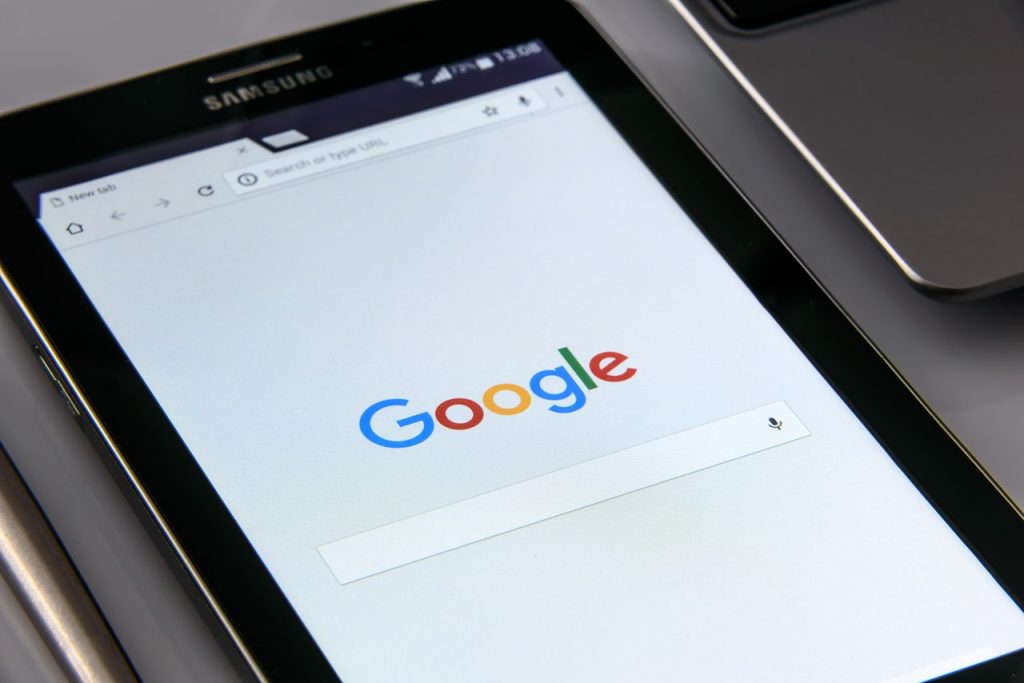
Do you remember a time without Internet? When Google wasn't a verb yet, Amazon was little more than an online bookstore, and it was a novelty to book a holiday with Expedia or even to check bank statements online?
The first website has existed almost since the web's invention by Sir Tim Berners-Lee in 1989. Though much like air travel, cars, and colour television, Internet access wasn't available to most until many years later. As a result, web designers’ focus was very much on functionality within the technological limitations it faced at the end of the 20th century.
The Eureka moment came with the millennium, as home PCs with a dial-up connection (followed by broadband) became the norm in many households of the western world. Statistics* show a 438% increase in the number of websites available online from 1999 to 2000, changing from 3 million to over 17 million, a year-on-year percentage increase which has never been greater since. It was, if you like, the Internet’s equivalent of the Cambrian explosion.
 At that time, Google (launched in 1998) wasn't a verb yet, Amazon (1995) was little more than an online bookstore, and it was a novelty to book a holiday with Expedia (2001) or even to check bank statements online. Thinking back, those websites were certainly not in any way smooth or sleek. They couldn't afford to be so, because the more data and images a site had, the longer it took to load - often line by painful line. A lot has changed in 20 years, but frustration at slow-to-load websites has remained.
R/Evolution of web design?
Thanks to reliable broadband and fibre optics, websites can now afford to be rich in content and design without compromise. The transition has appeared somewhat seamless to us in the majority of cases, because changes have been made incrementally with only minor adjustments. Only occasionally would you see a complete overhaul of a site, often rolled out at the same time as a rebranding. It’s clear that the emphasis has typically been on evolution, not revolution.
The prime example of this steady evolution is Google. Most people would probably think back and suppose that their page hasn’t changed at all over the years, with the exception of the famous ‘Doodle’ appearing on occasion. But in fact, their website has seen a number of subtle changes, from the calligraphy of its name, to the other buttons and options on the homepage. A two-minute video of Google’s evolution since 1998 is available on YouTube (which for the record, didn’t exist until 2005 and is now owned by Google) at the foot of the page.
At that time, Google (launched in 1998) wasn't a verb yet, Amazon (1995) was little more than an online bookstore, and it was a novelty to book a holiday with Expedia (2001) or even to check bank statements online. Thinking back, those websites were certainly not in any way smooth or sleek. They couldn't afford to be so, because the more data and images a site had, the longer it took to load - often line by painful line. A lot has changed in 20 years, but frustration at slow-to-load websites has remained.
R/Evolution of web design?
Thanks to reliable broadband and fibre optics, websites can now afford to be rich in content and design without compromise. The transition has appeared somewhat seamless to us in the majority of cases, because changes have been made incrementally with only minor adjustments. Only occasionally would you see a complete overhaul of a site, often rolled out at the same time as a rebranding. It’s clear that the emphasis has typically been on evolution, not revolution.
The prime example of this steady evolution is Google. Most people would probably think back and suppose that their page hasn’t changed at all over the years, with the exception of the famous ‘Doodle’ appearing on occasion. But in fact, their website has seen a number of subtle changes, from the calligraphy of its name, to the other buttons and options on the homepage. A two-minute video of Google’s evolution since 1998 is available on YouTube (which for the record, didn’t exist until 2005 and is now owned by Google) at the foot of the page.
 As Google has prevailed, becoming the world’s preferred search engine, they have focussed on the user experience and their ‘core competence’ of delivering the best and most relevant search results. We all know about their projects such as Google Glass and self-driving cars, but their main product has remained the same, and they have not cluttered the homepage by attempting to diversify their service offering. Their website has one distinctive yet subtle link to Gmail, whilst everything else (including YouTube) is only available via a separate menu button or widget.
A short drive east around San-Francisco Bay, Amazon has faced a challenge due to their range of products and services increasing constantly. Unlike Google, their business model is focussed on offering a broad range of physical goods. Each additional item in stock requires its own page, classification, and relevant category in the directory. The firm used to have tabs for books, music, entertainment, and gifts, because their range of products could fit into one of those at the time. Today those are gone, as their range of products could not possibly be confined to a hand-full of tabs.
As Google has prevailed, becoming the world’s preferred search engine, they have focussed on the user experience and their ‘core competence’ of delivering the best and most relevant search results. We all know about their projects such as Google Glass and self-driving cars, but their main product has remained the same, and they have not cluttered the homepage by attempting to diversify their service offering. Their website has one distinctive yet subtle link to Gmail, whilst everything else (including YouTube) is only available via a separate menu button or widget.
A short drive east around San-Francisco Bay, Amazon has faced a challenge due to their range of products and services increasing constantly. Unlike Google, their business model is focussed on offering a broad range of physical goods. Each additional item in stock requires its own page, classification, and relevant category in the directory. The firm used to have tabs for books, music, entertainment, and gifts, because their range of products could fit into one of those at the time. Today those are gone, as their range of products could not possibly be confined to a hand-full of tabs.
 At that time, Google (launched in 1998) wasn't a verb yet, Amazon (1995) was little more than an online bookstore, and it was a novelty to book a holiday with Expedia (2001) or even to check bank statements online. Thinking back, those websites were certainly not in any way smooth or sleek. They couldn't afford to be so, because the more data and images a site had, the longer it took to load - often line by painful line. A lot has changed in 20 years, but frustration at slow-to-load websites has remained.
R/Evolution of web design?
Thanks to reliable broadband and fibre optics, websites can now afford to be rich in content and design without compromise. The transition has appeared somewhat seamless to us in the majority of cases, because changes have been made incrementally with only minor adjustments. Only occasionally would you see a complete overhaul of a site, often rolled out at the same time as a rebranding. It’s clear that the emphasis has typically been on evolution, not revolution.
The prime example of this steady evolution is Google. Most people would probably think back and suppose that their page hasn’t changed at all over the years, with the exception of the famous ‘Doodle’ appearing on occasion. But in fact, their website has seen a number of subtle changes, from the calligraphy of its name, to the other buttons and options on the homepage. A two-minute video of Google’s evolution since 1998 is available on YouTube (which for the record, didn’t exist until 2005 and is now owned by Google) at the foot of the page.
At that time, Google (launched in 1998) wasn't a verb yet, Amazon (1995) was little more than an online bookstore, and it was a novelty to book a holiday with Expedia (2001) or even to check bank statements online. Thinking back, those websites were certainly not in any way smooth or sleek. They couldn't afford to be so, because the more data and images a site had, the longer it took to load - often line by painful line. A lot has changed in 20 years, but frustration at slow-to-load websites has remained.
R/Evolution of web design?
Thanks to reliable broadband and fibre optics, websites can now afford to be rich in content and design without compromise. The transition has appeared somewhat seamless to us in the majority of cases, because changes have been made incrementally with only minor adjustments. Only occasionally would you see a complete overhaul of a site, often rolled out at the same time as a rebranding. It’s clear that the emphasis has typically been on evolution, not revolution.
The prime example of this steady evolution is Google. Most people would probably think back and suppose that their page hasn’t changed at all over the years, with the exception of the famous ‘Doodle’ appearing on occasion. But in fact, their website has seen a number of subtle changes, from the calligraphy of its name, to the other buttons and options on the homepage. A two-minute video of Google’s evolution since 1998 is available on YouTube (which for the record, didn’t exist until 2005 and is now owned by Google) at the foot of the page.
 As Google has prevailed, becoming the world’s preferred search engine, they have focussed on the user experience and their ‘core competence’ of delivering the best and most relevant search results. We all know about their projects such as Google Glass and self-driving cars, but their main product has remained the same, and they have not cluttered the homepage by attempting to diversify their service offering. Their website has one distinctive yet subtle link to Gmail, whilst everything else (including YouTube) is only available via a separate menu button or widget.
A short drive east around San-Francisco Bay, Amazon has faced a challenge due to their range of products and services increasing constantly. Unlike Google, their business model is focussed on offering a broad range of physical goods. Each additional item in stock requires its own page, classification, and relevant category in the directory. The firm used to have tabs for books, music, entertainment, and gifts, because their range of products could fit into one of those at the time. Today those are gone, as their range of products could not possibly be confined to a hand-full of tabs.
As Google has prevailed, becoming the world’s preferred search engine, they have focussed on the user experience and their ‘core competence’ of delivering the best and most relevant search results. We all know about their projects such as Google Glass and self-driving cars, but their main product has remained the same, and they have not cluttered the homepage by attempting to diversify their service offering. Their website has one distinctive yet subtle link to Gmail, whilst everything else (including YouTube) is only available via a separate menu button or widget.
A short drive east around San-Francisco Bay, Amazon has faced a challenge due to their range of products and services increasing constantly. Unlike Google, their business model is focussed on offering a broad range of physical goods. Each additional item in stock requires its own page, classification, and relevant category in the directory. The firm used to have tabs for books, music, entertainment, and gifts, because their range of products could fit into one of those at the time. Today those are gone, as their range of products could not possibly be confined to a hand-full of tabs.
Consumers know that they can search for anything, so the homepage of the website is now essentially an advertising space for the day’s special deals, and newer services such as Amazon ‘Prime’ to rival Netflix. This shows how the evolution of web-design has not only been important in terms of appearance, but also considers the overall strategy and corporate message that the host would like to present.So what can we learn from this? In general, what we have actually found ourselves with is a tendency towards clear and simple websites that help users navigate to the parts most relevant to them, as quickly and as easily as possible. Ultimately, the objective of the website is to provide information, allow a company to present a product or service, and maybe even make a sale. With the improvements in technology and processing speeds, a website could now almost be as data-heavy as it wants, but that might not actually be appealing to the consumer, and thus would not help achieve the overall objective. To use the earlier examples of Google and Amazon, it would not be in their interest to make their websites busier than they already are. You may see incremental changes to sites, or completely rebuild your own, but user-friendliness and ergonomics will prevail. We have come a very long way in a relatively short space of time. It’s impressive to think that many of the world’s most popular websites (including most, if not all, of social media today) did not even exist 15 years ago. With that in mind, it’s exciting that no one knows what the future holds. Who could have predicted just 20 years ago that we would have the entire world available at our fingertips in real time on a mobile device? It’s reassuring that human and technological advancements have changed society in ways that had been unpredictable, indeed wholly inconceivable to us, less than one generation ago. Different generations remember different things as defining moments, perhaps the installation of a home telephone, or colour television for example. It seems that there have been many milestones reached since the start of the century, especially with regards to mobile devices. It’s clear that web-design has seen more subtle change, but it has in fact been the driver behind the success of a new mobile era. Looking to the future, if you have decided that your website needs a subtle change, a new layout, or a complete redesign, then please do not hesitate to contact the team at The Loupe who will be happy to help out. Watch the Google evolution video *Data from ‘internetlivestats.com’ by Lewis Dutton